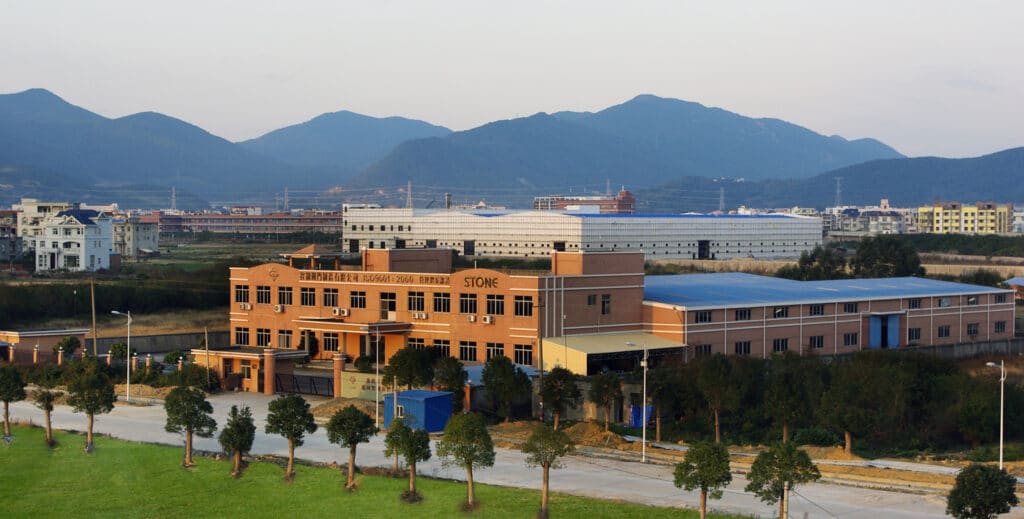In hydropower projects, the sluice gate valve is one of the important components of hydraulic buildings, which can be used to shut the orifice of the building as needed, or open the orifice in whole or in part to control the upstream and downstream water level and flow, widely used in flood control, irrigation, water supply, power generation, navigation, also can be used to remove floating materials, sediment, ice, etc., or provide the necessary conditions for the maintenance of related buildings and equipment. Cast iron sluice gate valves are usually installed in the inlet and outlet of buildings and other important passages to play their functions and benefits and maintain the safety of buildings through the flexible and reliable opening and closing of gates.
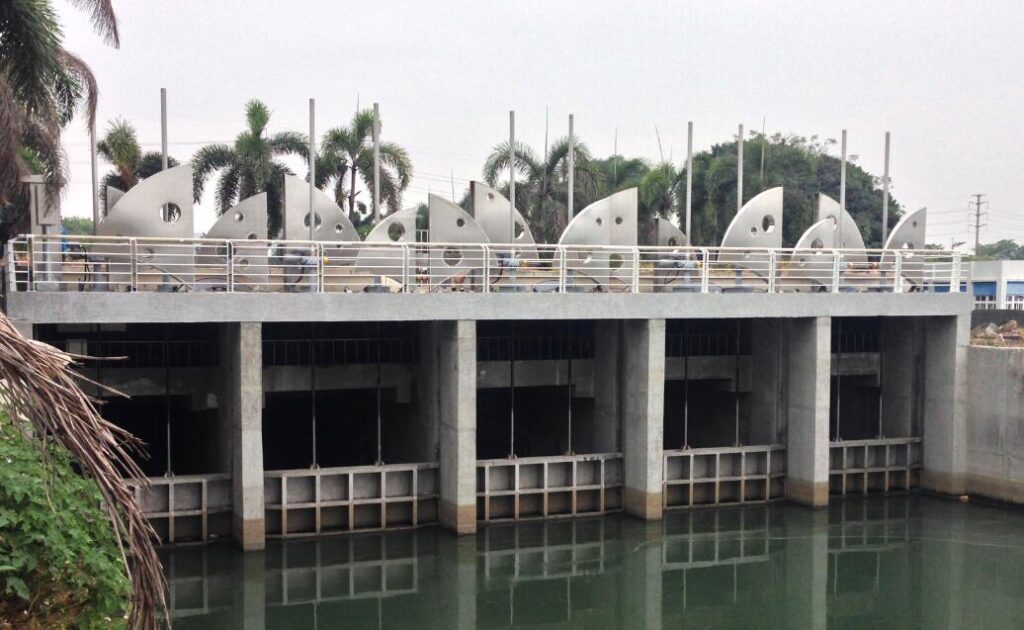
What Is Sluice Gate Valve
The sluice gate valves are real end-of-line valves designed to hold back water with minimal leakage in applications such as drains, sump tanks, and distribution boxes. A sluice valve is a valve that uses a gate or wedge-shaped disc that slides perpendicular to the direction of fluid flow into or out of the pipe. When the gate valve is fully open, the disc of the gate valve is completely separated from the flow of water. This is effectively no resistance to the flow. Because of this, there is very little reduction in pressure as the fluid passes through the gate valve.
Sluice gate valves cannot be used for throttling because they can’t accurately control the flow capacity. High flow rates in partially open valves can cause erosion of the disc and seat surfaces and also cause vibration and noise.
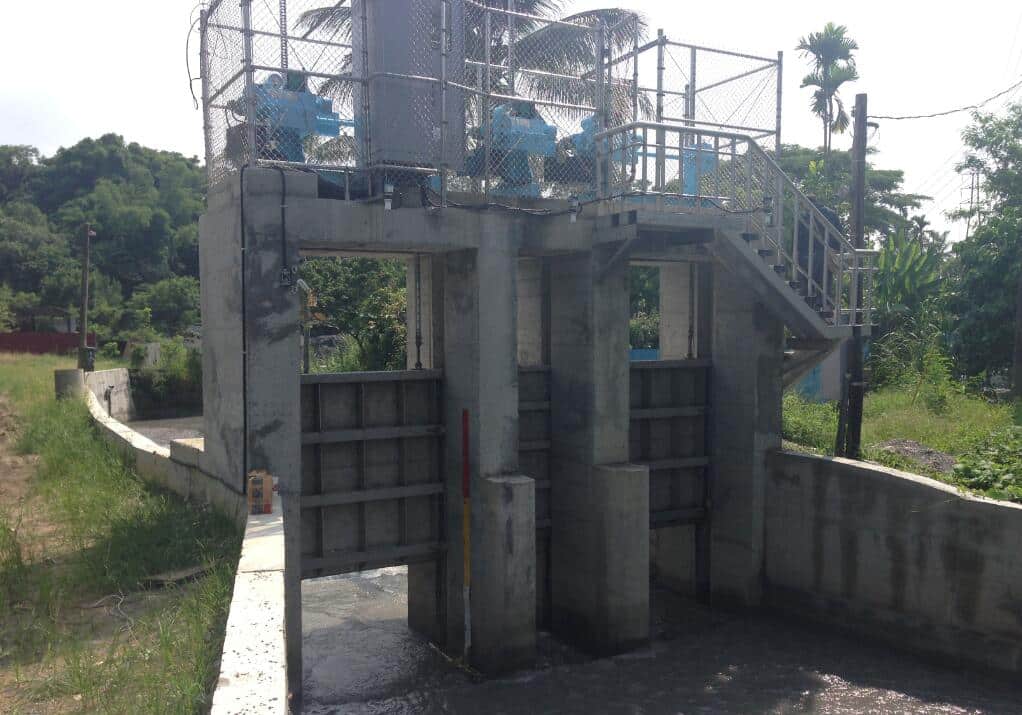
Components of Sluice Gate
Gate (movable part), fixing components, and gate opening and closing machinery are the three main parts of the steel sluice gate valve, these three parts include their own small components and all kinds of components play a unique function, and finally ensure the smooth operation of the steel sluice gate valve.
1) Gate Components
The gate structure includes a gate, beam lattice, longitudinal and transverse linkage system, walking bearing, support arm, support hinge, water stop equipment, lifting lug, and other types of components, which are used to close and open the orifice water retaining structure, where the panel directly retains water and transmits the water pressure to the beam lattice, the beam lattice supports the gate, the linkage system ensures the balance of water pressure, the walking bearing ensures the flexible movement of the gate structure, and the water stop equipment is used to avoid the water leakage problem of the gate.
2) Buried Components
Buried components mainly include the line of support for the operation of the track, reinforcing angle (corner protection orifice edge parts and door slot), water stop seat, and water stop rubber structure of contact steel.
3) Sluice Gate Opening and Closing of Mechanical Equipment
Opening and closing equipment is mainly used for the operation of the sluice gate, the form of the gate, the number of orifices, the number of fans, the setting and power of the opening and closing machine, etc., will affect the working state of the gate.
At present, the screw-type opening and closing machine are commonly used in small gates, while the hydraulic-type opening and closing machine and winch-type opening and closing machine are commonly used in large and medium-sized gates.
Sluice Gate Valve Design
In hydraulic engineering, the steel sluice gate valve mainly controls the adjustment of water level and flow, it is the essential equipment for the smooth operation of hydraulic engineering, and the plane steel gate valve is one of the main types of sluice valve, it has high performance, but the initial design, processing, manufacturing, and installation, etc. is more complicated and complex, any one of the indicators of control failure, may cause quality defects, which affects its various aspects use performance. Therefore, the designers of hydraulic projects must be based on the specific needs of water engineering comprehensive design factors, and do a good job for the reasonable optimization of the design of flat steel gates.
Overview of the Problem of Sluice Steel Flat Gate Valve in Hydraulic Engineering
A flat steel gate valve is a control device compared to other types of gate valves which in the interchangeability, structural design, installation and manufacturing, and maintenance management have significant advantages. They are widely used in water projects, irrigation, drainage, water diversion and power generation, shipping, and other projects, providing solid support for the good operation of water engineering. The following are the main problems related to the plane steel gate valves.
Application Issues
As a common gate type in small and medium-sized water conservancy projects, the advantages of design, manufacture, installation, commissioning, and maintenance of flat steel gates are extremely significant, but the selection and layout of gates and opening and closing machinery, the joint design of steel gates and opening and closing machinery and hydraulic structures can easily cause loopholes in the steel gates, thus affecting the normal use of the gates. For example, the flat steel gate opening and closing lack sufficient flexibility, hindering the opening and closing action in a timely and accurate degree. The gate body is subject to excessive corrosion, and can not continue to use, and gate water-stopping members lack tight sealing, resulting in serious water leakage problems. Designers must strengthen the analysis and summary of the problems, strictly make the design work, ensure that its use achieves the desired goal, and then provide support for water conservancy engineering work.
Sluice Gate Valve Design
a. Structure layout and selection
The summary of the design of the sluice gate valve structure layout and selection is a key factor affecting its application, the optimal design of the sluice gate valve must start from these two aspects of concrete implementation, in order to lay a good foundation for a gate design.
Gate Structure Layout Design
Designers should be based on the comprehensive requirements of the application of water conservancy projects, combined with the project around the specific building conditions and construction conditions, analysis of the application of the gate topography, address and construction factors, the core objectives of the design work, carefully weigh its rationality and economy, to ensure that the gate structure layout with the actual situation.
Gate Selection
Designers in the gate selection, need to consider the technical feasibility, economic permissibility, application rationality, operational reliability, and other factors to ensure that the role of the gate effectively plays. Take the water conservancy project with an orifice area below 4m and water flow within 30m3 per second as an example, the designer can give priority to the conical valve for the working gate and design the flat pressure structure device in the lug part of the gate structure.
b. Design of Detailed Structure
The detailed structural design of the sluice gate valve includes gate thickness design, beam stress design, capacity design of opening and closing machinery, water stop pressure plate design, anti-corrosion design of metal components, etc. To ensure the quality of the sluice gate valve structure, the designer must follow the design requirements of these aspects and implement a standardized design.
Gate Thickness and Beam Design
Flat steel gates are designed independently of the panel structure and the beam structure, and the designer must design both structures efficiently according to the requirements.
In terms of gate design, thickness is the main factor affecting the sluice gate valve function, and the current gate thickness design is mainly based on the Bach formula, the Specification, and the German Federal Standard. Each program has its own design focus, for example, the Specification pays more attention to the strength reserve of the panel in the elastoplastic phase and uses the allowable stress of the material as the criterion for its strength, while the two other programs position the gate as an elastic thin plate without considering its strength in the elastoplastic phase after deformation.
From the point of view of the design of the beam stress, because the scale of each gate is different, the designer must choose the appropriate beam structure form according to its specific scale, and reasonably design the number and layout of the main beam and secondary beam. At the same time, because the main beam and the secondary beam can produce different stresses in the form of gate participation and non-participation, the designers must measure the beam stresses to ensure the stability of the flat steel gate beam.
Capacity Design of Opening and Closing Machinery
Reduce the capacity of the opening and closing machinery can maintain the normal operation of the gate valve, the designer achieved this goal can be designed by the following methods, such as improving the gate ventilation and ventilation effect, selecting the appropriate door type, improving the form of the bottom edge of the door leaf structure, reduce friction resistance. At the same time, choosing the form of fixed wheel support to support the flat gate, or taking the sliding support, which can reduce the opening and closing capacity.
One Direction Sluice Gate Valve Vs. Bi-direction Sluice Gate Valve
- The Direction of the Water Stop Is Different
Flat cast iron sluice gate valves include one-way water stop and bi-direction water stop cast iron sluice valves, one-way is a one-sided water stop, and only the water contact part stops water, the other direction(back pressure) can not stop the water. Bi-direction sluice gate valve is can stop water in two ways. Two-way cast iron sluice gate valves also include a two-way arched cast iron gate valve and a two-way flat cast iron gate valve.
2. The Application Position Is Different
Bi-direction Sluice Gate Valve has the characteristics of good wear resistance and strong impact resistance. Mostly used in the outlet, the Bi-direction sluice gate valve is the main role of the gate’s inlet and the outlet of two directions can withstand the water pressure, the water flow in either direction can stop; one-way stop cast iron gate valve is mostly used in the inlet, if the water backlash, the gate will not play the effect of water stop.
Iron Steel Gate Valve Vs. Steel Gate Valve
Cast iron gate valves and steel gate valves are the two more widely used in water conservancy gates, and they have some differences in working principle, classifying, water stopping method, model expression, characteristics, etc.
- The Difference of Working Principle
The Working Principle of Cast Iron Gate Valve
The gate of the cast iron gate valve is a water retaining member that directly bears the water pressure, and the gate frame is the supporting member around the gate, and also the slide for the up and down movement of the gate. The part outside the slide is set in the secondary concrete of the gate pier and the gate bottom, and the water pressure borne by the gate plate is evenly transferred to the gate pier and the gate chamber bottom. The contact of the water surface around the gate frame and the backwater surface around the gate frame is straight and smooth after mechanical processing and planning, so that the combined surface, water stop surface, and movement chute are combined into one. Under the action of the opening and closing machine, when the gate is opened and closed, the tightening slant iron and the gate frame slide ensure the longitudinal and transverse running track of the gate. Under the double action of water pressure and tight closing ramp, it ensures the smooth running of the gate plate, so that the gate plate and the gate frame slide fit closely to achieve the effect of stopping water.
The Working Principle of Steel Gate Valve
Steel gate valve is made of steel plate as the base material, with rubber water stop and anti-corrosion method of sandblasting and rust removal and hot spraying zinc on the surface. The steel gate valve has a reasonable and sturdy structure, wear and corrosion resistance, reliable performance, easy to install and maintain and etc. The most characteristic is durability. The light steel structure is all composed of a cold-formed thin-walled steel member system, and the steel bones are made of anti-corrosion cold-rolled galvanized sheet, which effectively avoids the influence of rusting of steel plates during construction and use, and increases the service life of light steel members. The service life of the structure can reach 30 years.
- The Difference Water Stopping Method
The cast iron gate valve stops water through the close fitting of the door plate and the door frame, cast iron gate valve has no water stop rubber. The steel gate valve stops water through the close fitting of the water stop rubber and the door frame.
Types of Sluice Valve
In some water intake and water supply projects on the transmission pipeline installed throttle cast iron gate valve, is used to control the flow according to the need. In the pumping station inlet and some tunnels, culverts, inverted siphons, etc. inlets and outlets are generally set up with maintenance gates to provide conditions for the maintenance of hydraulic buildings and pumping equipment. In the reservoir overflow dam or spillway is generally set up with a flood relief work sluice valve, used to control the water level of the reservoir, and release the downstream flood flow, to maximize the functional benefits of the reservoir.
A sluice valve as a control facility for closing and releasing the water channel, due to different types, driving methods, and designs, there are different classifications. Now we classify the sluice valve from four aspects, such as the material, gate shape, the relative position of the top of the gate and the water level, and the functional characteristics.
a. Material
According to the material of manufacturing sluice gate valve is divided into steel gate valve, casting gate valve, stainless steel gate valve, wooden gate valve, cast iron with copper gate valve, reinforced concrete gate valve, and combined material gate valve. The flap gate valve can be opened and closed automatically with the energy of water power, so it is also called the hydraulic automatic gate valve. When we choose the gate form need to consider its location in the hydraulic building, size, design head, operating conditions, manufacturing capacity and installation technology level, and other factors, the requirements to achieve good water flow conditions, water stop-tight, opening and closing force is small, easy and flexible operation and maintenance. Flat gate valves and curved gate valves are the commonly used gate types.
b. Gate Shape
Based on the shape of the gate, the sluice gate valve is divided into the flat gate, arc gate, herringbone gate, arch gate, spherical gate, and cylinder gate, etc.
c. Relative Position of the Top of The Gate and the Water Level
According to the relative position between the top of the gate and the water level when the gate is closed, it is divided into an open-top type gate valve and a submerged gate valve.
d. Functional Characteristics
Based on the functional characteristics of the sluice gate valve can be divided into a working sluice valve, a maintenance sluice valve, and an accident sluice valve.
- Working Sluice Valve
The working sluice valve also called the main sluice gate valve, which can open and close in dynamic water.
- Maintenance Sluice Valve
The maintenance sluice valve is installed upstream of the working sluice valve, used for buildings or working sluice valve and other short-term water blocking during maintenance, generally in the static water opening and closing.
- Accident/Emergency Sluice Valve
The accident sluice valve is installed upstream of the deep hole working sluice valve, used for building or equipment accidents, and it can be closed in dynamic water and opened in static water. When it is also used as a maintenance sluice valve, it is also called an accident maintenance sluice valve. The accident sluice valve that needs to be closed urgently within a limited period of time is called a quick sluice valve.
e. Drive Mode(opening and closing mechanism)
- Lifting Type Electric Sliding Gate Valve
Combining safety and practicality, the gate is easy to operate. The feature of the compact lift gate is that it provides ample operating space to enhance the safety of users, and heavy doors can be opened and closed easily. The door lifter can be operated in both electric and manual modes.
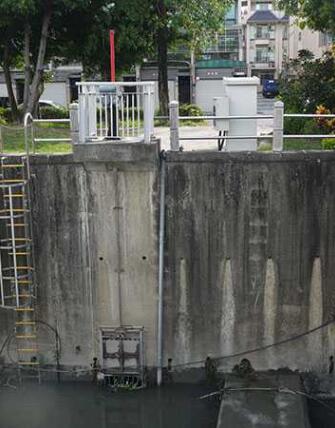
- Electric Roller-Type Sluice Gate Valve
The gate valve can respond to the demand of emergency closing situations, simple operation can cope with the sudden flooding of the river caused by heavy rain, and emergency closing of the gate to avoid the loss of people’s safety and living property.
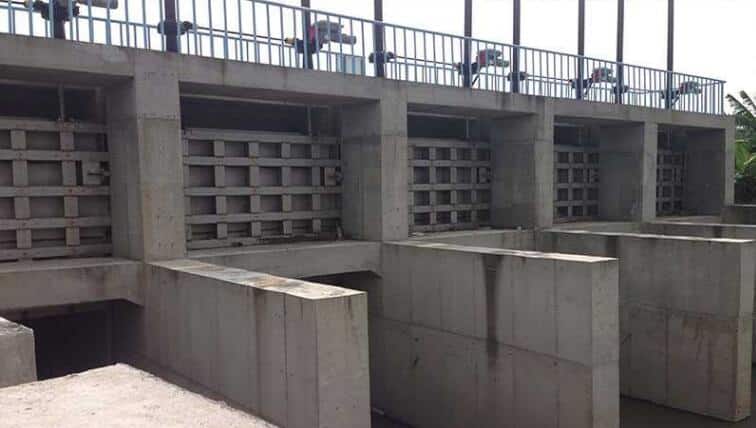
- Automatic Sluice Gate Valve
The automatic sluice gate valve discharges water to the outside without human operation and stops the backflow of water from the outside when the river suddenly rises due to heavy rain.
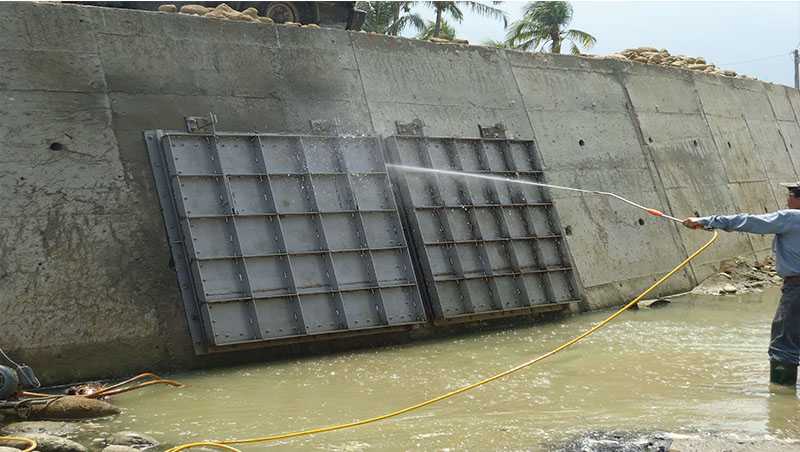
- Lifting Type Manual Sliding Gate Valve
A gate that combines safety and practicality and makes operation easier. Featured small and compact door lifter with ample operating space to enhance the safety of users.

- Lower Horizontal Flap Gate Valve
The lower horizontal flap gate valve is mainly applied to hydraulic hydropower, municipal construction, water supply and drainage, aquaculture, agricultural water conservancy construction, tourism development, and other projects. It’s over the gate plate hinge seat is set on the concrete dam base, the gate plate is connected to the hydraulic cylinder through the cylinder connection shaft activity, the hydraulic cylinder is fixed on the concrete dam base through the cylinder hinge seat, the hydraulic cylinder, and the cylinder hinge seat can be rotated between, the hydraulic cylinder is connected to the hydraulic control device through the hydraulic oil pipe, the hydraulic control device is connected to the remote control equipment, the gate plate and the hydraulic cylinder form a triangular support structure, the bottom of the gate plate The bottom of the door plate is installed with bottom water stop rubber.
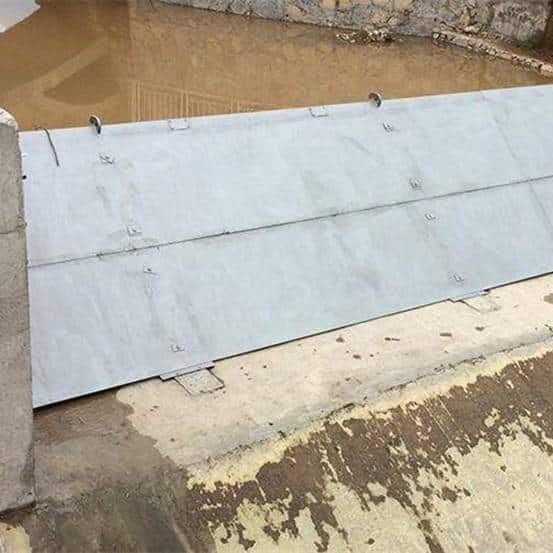
- Hydraulic Flap Gate/Dam Valve
The hydraulic flap gate valve is also called the hydraulic flap steel dam, hydraulic flap gate valve is based on the principle of hydraulics and gate weight balance principle, adding a damping feedback system to realize the gate with the increase of upstream water level and gradually open the flood relief. The upstream water level decreases and gradually returns to the storage level so that the upstream water level is always within the required range (i.e. normal upstream water level).
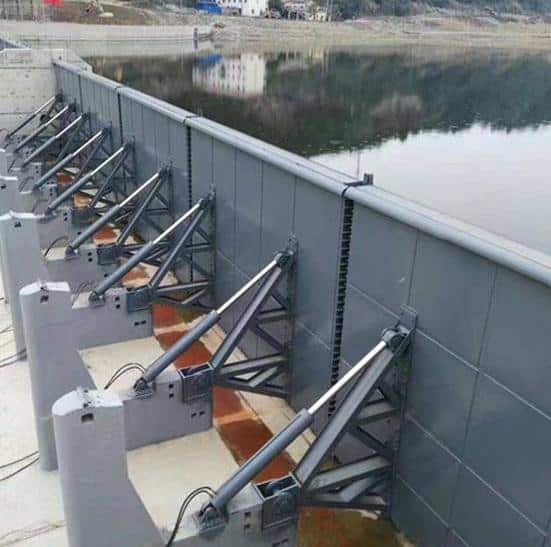
- Self-Operated Flap Gate Valve
The hydraulic self-control flap gate valve is assembled by prefabricated reinforced concrete panels, legs, piers and rollers, connecting rods, and other metal components. The hydraulic gate valve does not need additional power and artificial, completely by the upstream automatically increases or decreases the amount of water and water level rise and fall, the role of the gate on the size of the pressure changes, through the legs, piers, and rollers with the cooperation, so that the pivot point with the opening degree of continuous change to achieve the opening and closing of the gate. As the design adopts the measures such as connecting rod roller structure, it effectively realizes the hydraulic self-control and weakens the flapping and instability.
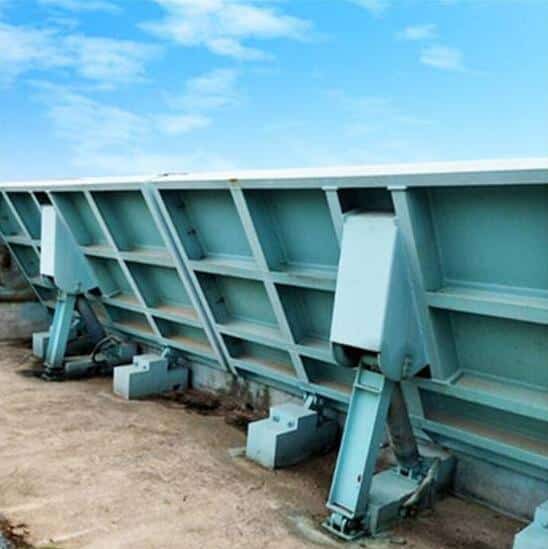
Installation and Maintenance of Sluice Gate Valves
The sluice gate valves are simple to use and can be used for a long time as long as they are properly installed and regularly maintained.
Sluice Valve Installation
- These sluice valves can be installed in any direction, however, if a large-size sluice valve is to be utilized, it should be installed in an upright position for ease of operation.
- Before installation, the valve body, stem, and gate material must be examined.
- It must be confirmed that the valve was not damaged during shipment or storage. Before installing the valve, make sure it is free of debris, corrosion, wrapping material, and dirt.
- Make sure the flanges of the pipe and valve are matched, then connect and align the valve. Insert the bolts and tighten them with even pressure to make sure the valve is sealed between the pipes.
- After installation is complete, try operating the valve several times to ensure it is in the correct position and has not moved from the desired position at installation.
- The sluice gate valve is tested according to the proper procedures provided by the manufacturer to ensure that the valve is working properly and can handle the operating parameters without problems.
Sluice Valve Maintenance
To make sure that the valve is not blocked or worn if it is used seldom, it should be operated and serviced once a month. Make sure the system is pressurized-free and pressure-free before proceeding. Remove the valve cover and stem before removing the gate for examination. After that, check the sluice and guides for any damage or wear and, if necessary, repair or reinstall the affected components.
Final Thought
THINKTANK specializes in producing high-quality and high-efficiency industrial valves, especially water sluice gate valves for long-term use on water channels or dams, buying from us is a good investment. Because in the long run, it only needs very little maintenance cost to last 10 years, or even 30 years or more cycles, which can help the end-user save a lot of money.
